10 promises Trump kept in 2017
Donald Trump in 2017 moved from being a chaos candidate to a chaos president. He shoots for the moon (literally), routinely says things that aren’t true, and often makes pledges that generate enormous attention but very little follow-through. Many of his signature policy efforts have been tied up in or blocked by the courts, his campaign is under investigation by the FBI, and his approval rating is at historic lows for a first-year president.
But the mind-numbing deluge of the Trump administration’s first-year controversies — the sheer number of misstatements and inflammatory tweets and abrupt staffing shifts — sometimes obscures the fact that Trump has achieved quite a number of the things he set out to do during the first year of his administration. He is, after all, the president. And Democratic resistance or no, that remains the most powerful post in the land — the ultimate government executive authority.
Here are 10 campaign promises Trump kept. Together, these achievements could form the nucleus of a reelection campaign.
_____
“Bomb the hell out of ISIS.”

This pledge, made over and over again at raucous arena rallies during the campaign and popularized on buttons and T-shirts sold across America, has largely come to pass. Trump promised old-school war, with its greater tolerance of civilian casualties, and delegated difficult targeting decisions to the generals. By May, the Pentagon was running low on small bombs, it had dropped so many. By July, the U.S.-led bombing campaign had killed more than 2,000 civilians in Iraq — as many as were killed during the entire Obama administration. The Syrian city of Raqqa was declared “liberated” in October, but had been nearly destroyed by the U.S.-backed fighters. In September, Newsweek declared, “Trump really is ‘bombing the s***’ out of ISIS just like he promised.” In December, the Iraqi prime minister declared Iraq “fully liberated” from ISIS. That’s an achievement that past experience shows may be hard to hold — and ISIS-inspired attacks in the West continue to pose a threat as well. But there’s no question that when it comes to having hit ISIS hard, Trump can declare with as much certainty and pride as George W. Bush once did: “Mission accomplished.”
_____
“The replacement for Justice Scalia will be a person of similar views and principles.”
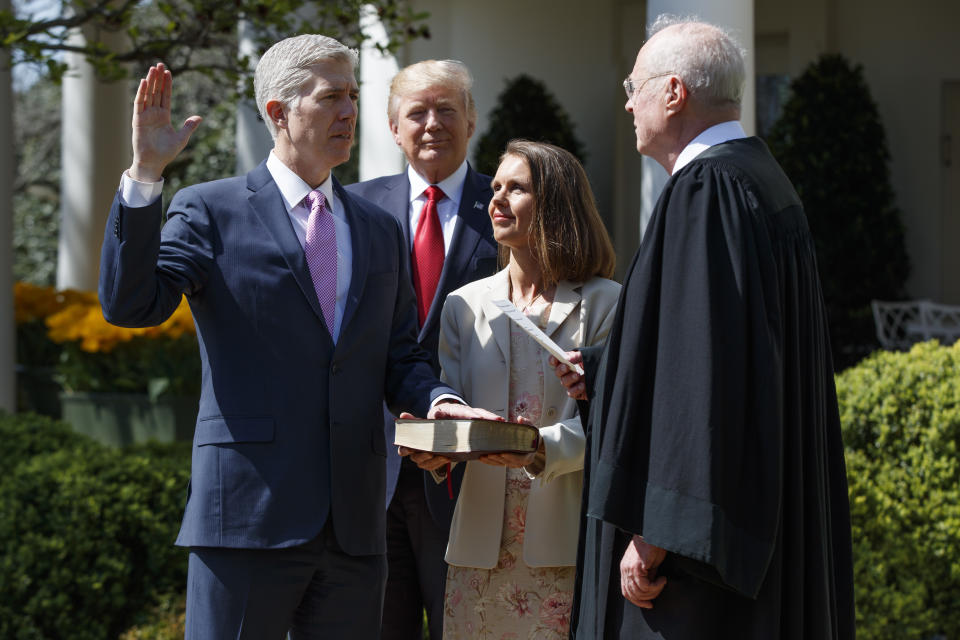
On Jan. 31, Donald Trump nominated Neil Gorsuch, described by the New York Times as “a conservative in the mold of Antonin Scalia.” He was confirmed at the start of April on a 54-45 party-line vote after a bruising political campaign for and against his nomination, and the removal of the judicial filibuster and its 60-vote threshold in the Senate. This was the easiest campaign promise for Trump to keep — thanks to Senate Majority Leader Mitch McConnell’s refusing to open the confirmation process to an Obama nominee throughout 2016 — and Trump kept it.
Since taking office, Trump has nominated and the Senate has confirmed more appellate judges in his first year than any other president since the courts they sit on were created in 1891.
_____
Pull out of the Trans-Pacific Partnership, “a potential disaster for our country.”
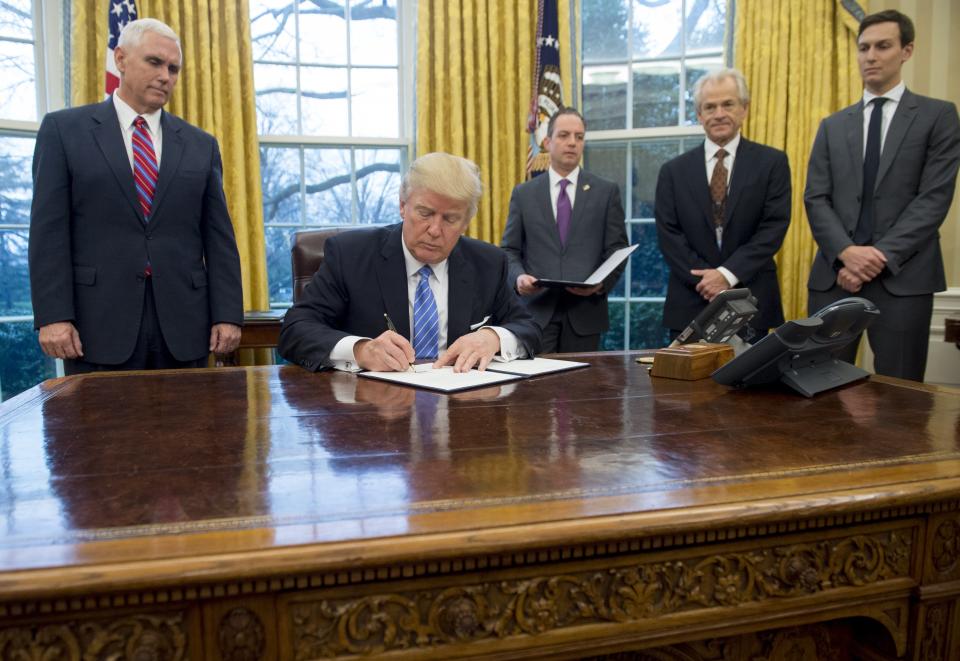
Trump promised to replace America’s multilateral trade agreements with one-on-one deals, and on his first full weekday in office he pulled America out of the 12-nation TPP agreement, a signature Obama accomplishment that Hillary Clinton had also expressed doubts about. Critics say U.S. withdrawal from the agreement governing trade with Asian and Pacific nations only strengthened the hand of China.
_____
“Cancel” the Paris climate deal.
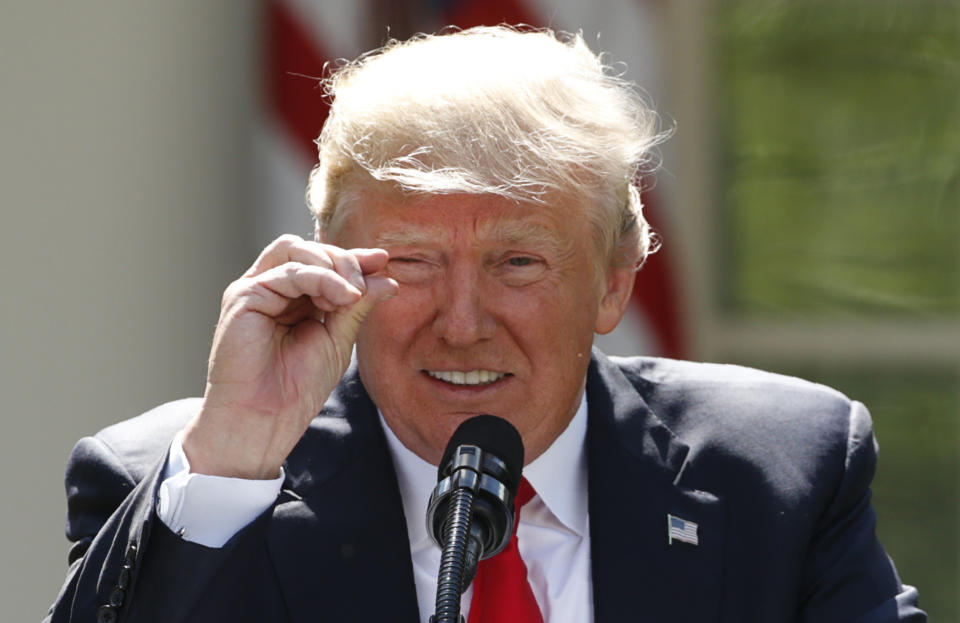
Trump vowed to “cancel” the Paris climate accord, which was ratified in October 2016, giving it the force of international law, and in June 2017 announced he would withdraw the United States from the now 197-country agreement to reduce carbon emissions. “We’re getting out,” he said. Of course the accord continues to exist, even without the official support of the world’s second-largest source of carbon emissions. And because the climate accord was ratified just days before Trump won election, the process of withdrawing from it is no simple matter: It will take four years and only become final shortly before the 2020 election. Nonetheless, Trump took all the steps he could to put “a checkmark next to one of his key campaign promises,” as CNN put it over the summer.
_____
“The Trump plan will lower the business tax rate.”

Trump made an array of specific promises during the campaign on how he’d cut taxes as president. Among them: Lower the business tax rate from 35 to 15 percent, “collapse the current seven tax brackets to three brackets,” repeal the alternative minimum tax and eliminate the carried interest loophole, create a new child- and elder-care tax deduction, and eliminate the estate tax.
Of these promises, the one most clearly encoded in the tax bill hashed out by Congress in December was the lowering of the corporate tax rate, which was reduced from 35 percent to 21 percent. “This bill put corporate tax cuts first; that’s where roughly 70 percent of the benefits go,” noted Los Angeles Times columnist Doyle McManus. The alternative minimum tax remains on the books, though with a higher income exemption level, as does the carried interest loophole and the estate tax. The new plan does not decrease the number of tax brackets at all, though it changes their income thresholds and rates.
_____
“Repeal and replace disastrous Obamacare.”

Congressional Republicans were repeatedly thwarted in their efforts to repeal and replace the Affordable Care Act’s many provisions in stand-alone bills, but the individual-mandate penalty for not carrying health insurance, which was legally permitted as a form of taxation by the U.S. Supreme Court, was repealed in the tax bill passed December 20. The mandate penalty is understood as one of the core provisions underlying the ACA’s health insurance exchanges, which need healthy as well as sick individuals to pay into the system.
The Trump administration sought to undermine enrollment in the exchanges in other ways too, such as cutting back on the advertising for them and the time to enroll. But Democratic and activist efforts to preserve Obamacare may have acted as a yearlong advertising campaign for the program, and enrollment in the exchanges in the end reached record numbers for 2018.
_____
Rolling back regulations.
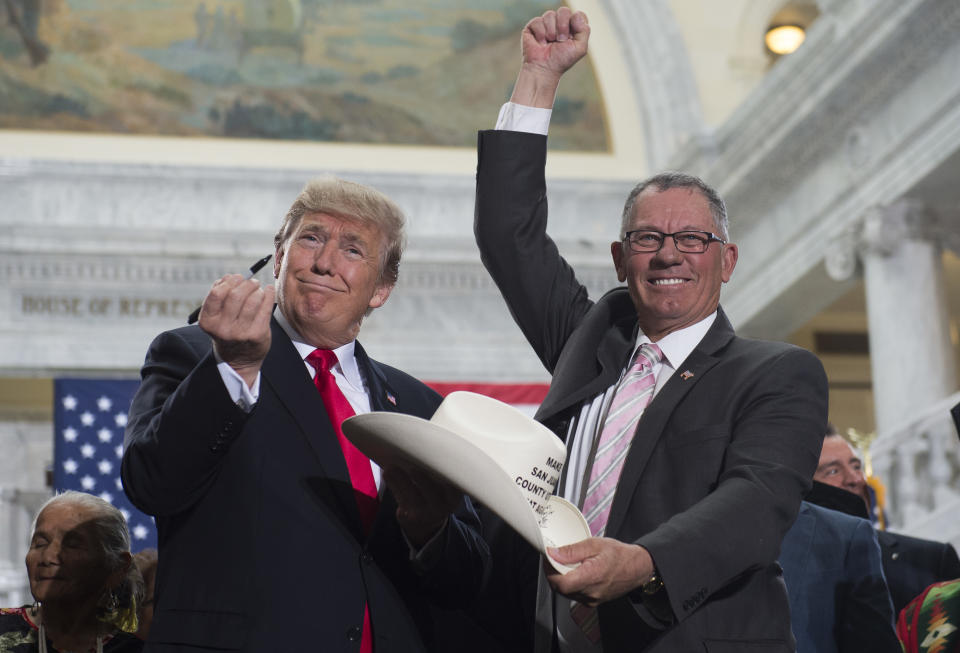
Donald Trump has overseen what the Week has described as “the biggest regulatory rollback in American history.” As befits an antiregulatory agenda overseen by a former real estate developer, the major focus of that rollback has been undoing regulations promulgated by the Environmental Protection Agency and the Department of the Interior — both of which govern land use — and rules that rein in the banking industry. The administration has also adopted a more lenient approach to enforcing those rules that remain on the books.
_____
“Drill, baby, drill.”
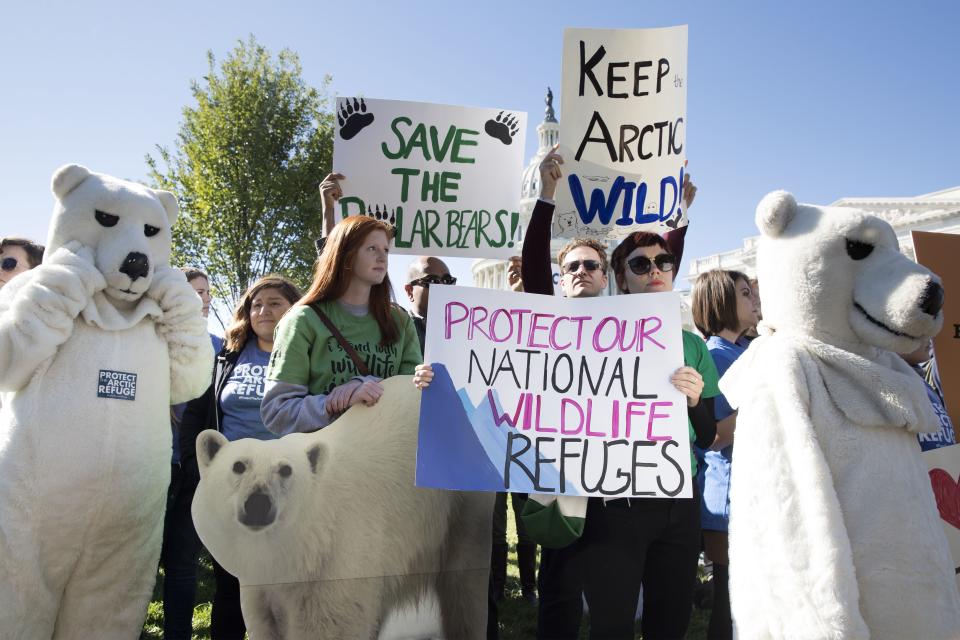
This was originally a 2008 Sarah Palin campaign promise, but Trump stood next to her as she echoed it while supporting his campaign, and he promised to once again open America’s public lands and offshore areas to energy exploration. In April, Trump signed an executive order to allow offshore drilling in parts of the Arctic, Pacific and Atlantic oceans, including in marine sanctuaries, declared off limits under Obama. He also ordered the Interior Department to review the Obama-era rules. The administration overturned an Obama-era ban on new coal mining leases on public lands as well.
_____
“By ending catch-and-release on the border, we will stop the cycle of human smuggling and violence. Illegal border crossings will go down.”

Then-Homeland Security Secretary John Kelly declared on a visit to El Paso, Texas, in April, “We have ended dangerous catch-and-release enforcement policies.”
That was a bit of an overstatement, but the perception that the Trump administration had ended the policy of allowing captured undocumented border crossers to avoid detention while awaiting legal disposition of their cases led to a dramatic 58 percent decline in border-crossing attempts during the first half of 2017.
By June, the average monthly increase in those awaiting proceedings outside custody was about 7,500, compared with 20,600 during the final seven months of Obama’s presidency. In April, the Border Patrol caught a low of 11,100 undocumented immigrants, but by October it had become clear that there had not actually been a formal revocation of catch-and-release policies, despite statements to the contrary, and border crossings surged again, to 26,000. That said, Trump’s assertion that ending catch-and-release would decrease crossings was proved correct, and border crossing attempts declined sharply for a time.
_____
Recognize Jerusalem as the capital of Israel.

“While previous presidents have made this a major campaign promise, they failed to deliver. Today, I am delivering,” Trump said in making the announcement overturning seven decades of U.S. foreign policy in December. The administration went on to sign a waiver permitting the U.S. Embassy to remain in Tel Aviv for another six months, continuing the policies of previous presidents.
_____
Best of 2017 Yahoo News Features



